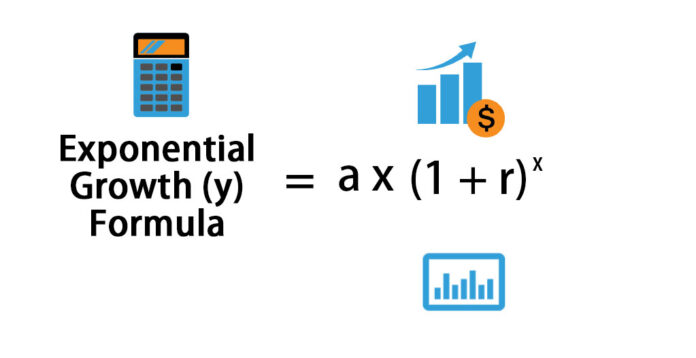What Is Exponential Growth?
Exponential Growth is a pattern of statistics that suggests greater increases with passing time, creating the curve of an exponential function. The components for Exponential Growth is V = S x (1 R)T. The beginning price is S, R is the interest charge, and T is the wide variety of periods which have elapsed. The formula calculates V, which is the cutting-edge fee.
To reveal Exponential Growth, assume a populace of mice rises exponentially with the aid of a component of every 12 months starting with two inside the first year, then 4 inside the second year, eight within the third yr, 16 in the fourth 12 months, and so forth. In this case, the populace is developing via a factor of 2 every yr. If mice as an alternative deliver birth to four puppies, you will have four, then 16, then sixty four, then 256.
Exponential Growth (which is multiplicative) can be contrasted with linear growth (which is additive) and with geometric increase (that is raised to a electricity).
Main point:
- Data that show exponential growth over time will have sharper increases.
- Compounding in finance creates exponential growth, allowing investors to benefit from higher returns over a longer period.
- Savings accounts that have a compounding rate of interest can grow exponentially.
Understanding Exponential Growth
In finance, compound returns reason exponential boom. The strength of compounding is one of the most effective forces in finance. This idea allows investors to create large sums with little preliminary capital. Savings accounts that convey a compound hobby price are not unusual examples of exponential growth.
Applications of Exponential Growth
Assume you deposit $1,000 in an account that earns a assured 10% rate of interest. If the account carries a simple interest rate, you’ll earn $a hundred according to year. The amount of hobby paid will not alternate so long as no additional deposits are made.
If the account contains a compound interest fee, however, you’ll earn hobby on the cumulative account overall. Each 12 months, the lender will observe the interest fee to the sum of the initial deposit, along with any hobby previously paid.
The interest rate is 10%, or $100. The second year however, applies the 10% rate to the total amount of $1100. This results in $110.The amount of interest is increasing with each successive year. This creates a rapid, exponential growth. Your account will be worth $17.449.40 after 30 years with no additional deposits.
The Exponential growth formula:
This curve appears almost vertical on a graph. It starts out slowly, and for a while it is nearly flat. This curve follows the following formula:
V=Sx(1+R)TV=Sx(1+R)T
Multiplying S by one plus R (the rate of interest) raised to the power T or the number periods has determined the current value of the initial starting point.
Special Considerations
The reality of financial modelling is more complex than the exponential growth that is commonly used. In the case of a saving account, the application of exponential growth is effective because the interest rate is guaranteed and doesn’t change over time. This is not true for most investments. Stock Market Returns, for example, do not follow the long-term averages every year.
Popularity has increased for other methods of predicting the long-term return, such as the Monte Carlo Simulation. This method uses probabilities in order to calculate the probability of different outcomes. The exponential growth model is more useful for predicting investment returns when growth rates are steady.
FAQs about Exponential Growth
What Are Examples of Exponential Growth?
Common examples of exponential increase in real-life eventualities include the growth of cells, the returns from compounding hobby from an funding, and the unfold of a disease for the duration of a plague.
Is Exponential Growth the Fastest Type of Growth?
What Is the Difference Between Linear Growth and Exponential Growth?
Linear growth is growth that takes place on the same rate of exchange. Every boom in x would bring about the equal increase in y. It is regular. With exponential increase, there’s a regular multiplier, so the increase price is changing.
Conclusion:
Compounding is taken into consideration one of the extraordinary miracles of making an investment due to the fact cash grows faster over longer durations due to the returns being calculated no longer simplest at the fundamental however additionally at the previous returns. This type of exponential growth underscores the idea that starting to make investments early in your life has clean benefits.
For More Information visit our Homepage:



